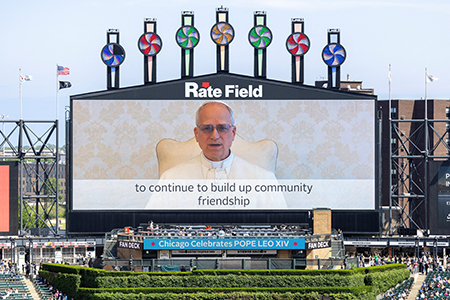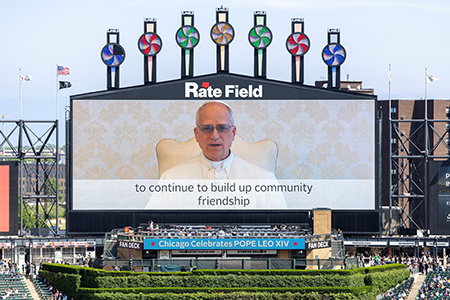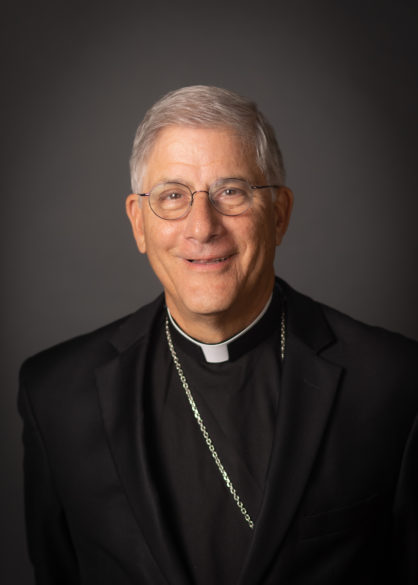By Bishop Joseph R. Kopacz, D.D.
The Jubilee of Hope has defined Pope Leo XIV’s first 100 days and will continue to be front and center in the early stages of his papacy until the Holy Door is closed on the Feast of the Epiphany in 2026. Eventually, the Holy Father will travel to the ends of the Earth, but for now pilgrims from every country where the Catholic Church has pitched its tent are flocking to Rome in Jubilee faith, hope and love.
Throughout May, June and July, Pope Leo embraced them in the love of God. In an extraordinary way, the Jubilee Year has seamlessly witnessed the transition from the Ignatian Francis to the Augustinian Leo.
Recall that Pope Francis departed this world on Easter Monday, the day after the great day of hope, and his last public appearance was his Urbi et Orbi papal blessing on Easter Sunday. Since his installation one month later as the successor of Peter, Leo XIV has wrapped himself in the banner of hope, praying for peace and unity in the world and in the church in order to create a civilization of love.
The Holy Father’s preaching and teaching are directed to the hearts and minds of all people, but especially to those who have been baptized into the body of Christ and are on the path of discipleship. His words are both a message of consolation and encouragement, as well as a call to conversion and mission.

Among his many noteworthy addresses was his message to a packed stadium on the South Side of Chicago. On this occasion, Pope Leo was beamed in from Rome to the faithful gathered at Rate Field – home of the Chicago White Sox – for the celebration of the Eucharist – a Mass of Thanksgiving in the Archdiocese of Chicago for their native son’s emergence as the successor of Peter. Cardinal Cupich imaginatively dubbed his message the “Sermon on the Mound.” The occasion was one of a kind, but his message was universal.
After words of greeting, the Holy Father rejoiced to celebrate on the feast of the Most Holy Trinity, the source of all unity, love and peace. “I begin with that because the Trinity is a model of God’s love for us. God: Father, Son and Spirit. Three persons in one God live united in the depth of love, in community, sharing that communion with all of us.”
During his address, the Holy Father spoke directly to the young people gathered in the stadium and to their peers participating online. It is a powerful message of hope, which I quote in large part: “I’d like to send a special word of greeting to all the young people – those of you gathered together today, and many of you who are perhaps watching this greeting through technological means, on the internet. As you grow up together, you may realize, especially having lived through the time of the pandemic – times of isolation, great difficulty, sometimes even difficulties in your families, or in our world today.
“Sometimes it may be that the context of your life has not given you the opportunity to live the faith, to live as participants in a faith community, and I’d like to take this opportunity to invite each one of you to look into your own hearts, to recognize that God is present and that, perhaps in many different ways, God is reaching out to you, calling you, inviting you to know his Son Jesus Christ, through the Scriptures, perhaps through a friend or a relative … a grandparent, who might be a person of faith. But to discover how important it is for each one of us to pay attention to the presence of God in our own hearts, to that longing for love in our lives, for … searching, a true searching, for finding the ways that we may be able to do something with our own lives to serve others.”
In his reflection, Pope Leo addressed every generation in the People of God to know their dignity as God’s children, to personally know the Lord Jesus as a friend, and to embrace the call to be ambassadors for hope in this world. “So, I would like to invite all of you to take a moment, to open up your own hearts to God, to God’s love, to that peace which only the Lord can give us. To feel how deeply beautiful, how strong, how meaningful the love of God is in our lives. And to recognize that while we do nothing to earn God’s love, God in his own generosity continues to pour out his love upon us. And as he gives us his love, he only asks us to be generous and to share what he has given us with others.”
In other words, play ball in the stadium of God’s kingdom.




